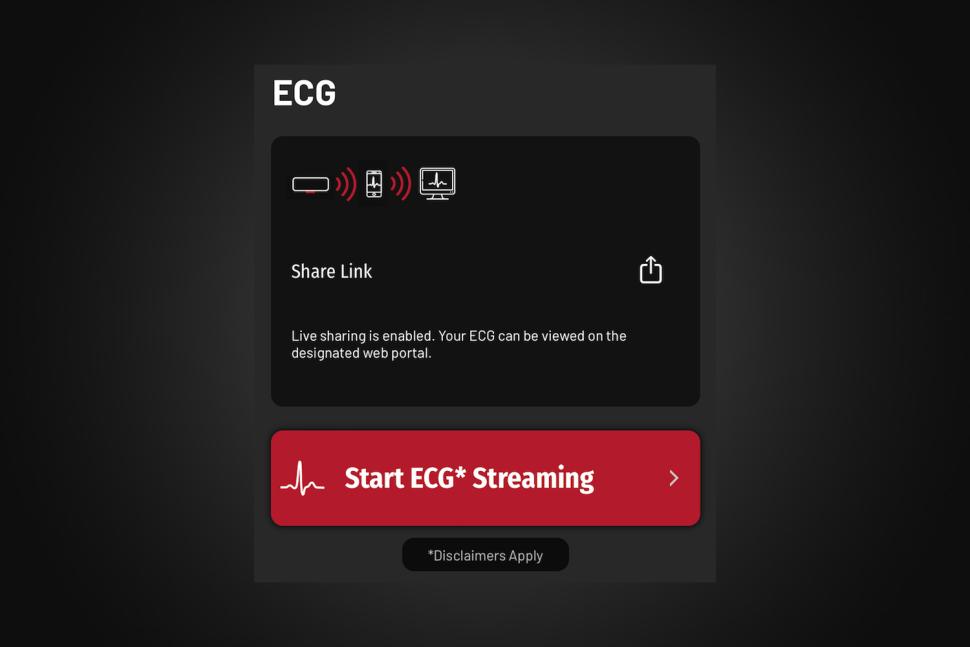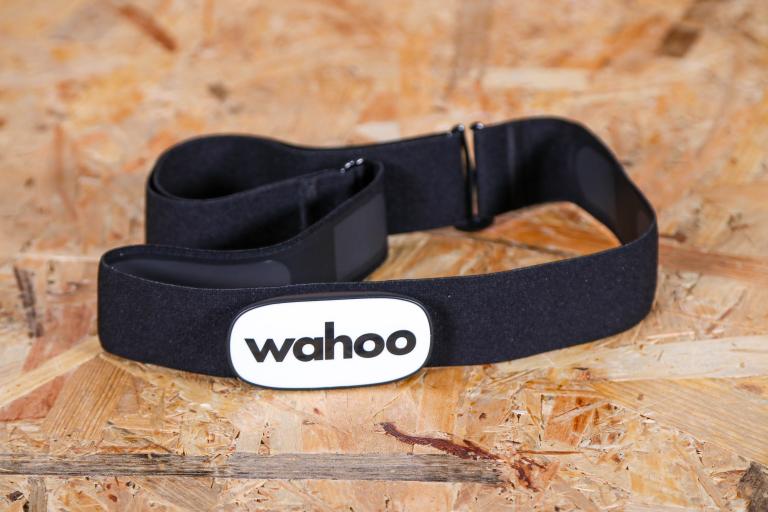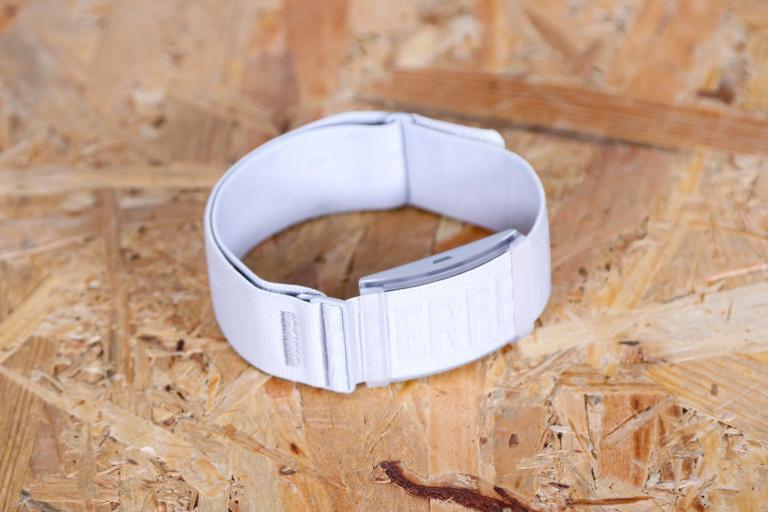- News
- Reviews
- Bikes
- Accessories
- Accessories - misc
- Computer mounts
- Bags
- Bar ends
- Bike bags & cases
- Bottle cages
- Bottles
- Cameras
- Car racks
- Child seats
- Computers
- Glasses
- GPS units
- Helmets
- Lights - front
- Lights - rear
- Lights - sets
- Locks
- Mirrors
- Mudguards
- Racks
- Pumps & CO2 inflators
- Puncture kits
- Reflectives
- Smart watches
- Stands and racks
- Trailers
- Clothing
- Components
- Bar tape & grips
- Bottom brackets
- Brake & gear cables
- Brake & STI levers
- Brake pads & spares
- Brakes
- Cassettes & freewheels
- Chains
- Chainsets & chainrings
- Derailleurs - front
- Derailleurs - rear
- Forks
- Gear levers & shifters
- Groupsets
- Handlebars & extensions
- Headsets
- Hubs
- Inner tubes
- Pedals
- Quick releases & skewers
- Saddles
- Seatposts
- Stems
- Wheels
- Tyres
- Health, fitness and nutrition
- Tools and workshop
- Miscellaneous
- Tubeless valves
- Buyers Guides
- Features
- Forum
- Recommends
- Podcast
review
 2024 Fourth Frontier Frontier X2 Smart Heart Monitor.jpg
2024 Fourth Frontier Frontier X2 Smart Heart Monitor.jpg£429.00
VERDICT:
Specialist device that comes at a cost, but particularly useful if you are concerned about your heart health
Continuous ECG monitoring
Quality and quantity of data
Intuitive app
Expensive
Micro-USB charging
Hard to read the screen when wearing
Weight:
55g
Contact:
At road.cc every product is thoroughly tested for as long as it takes to get a proper insight into how well it works. Our reviewers are experienced cyclists that we trust to be objective. While we strive to ensure that opinions expressed are backed up by facts, reviews are by their nature an informed opinion, not a definitive verdict. We don't intentionally try to break anything (except locks) but we do try to look for weak points in any design. The overall score is not just an average of the other scores: it reflects both a product's function and value – with value determined by how a product compares with items of similar spec, quality, and price.
What the road.cc scores meanGood scores are more common than bad, because fortunately good products are more common than bad.
- Exceptional
- Excellent
- Very Good
- Good
- Quite good
- Average
- Not so good
- Poor
- Bad
- Appalling
The Fourth Frontier Frontier X2 Smart Heart Monitor is claimed to be the first heart rate monitor that performs a continuous ECG, or electrocardiogram. It's a specialist bit of kit that delivers on its promise, offering valuable insights into your heart's activity during daily activities and exercise. The app is also easy to use, though the price tag means it's not for everyone (check out guide to the best heart rate monitors for more affordable options).
Measuring the electrical activity of your heart is not a novel concept, but conventional ECGs often require bulky and heavy devices that don't work well for daily activities and exercise.
You can measure lots of metrics while riding, such as heart rate, power, cadence, glycogen levels and core body temperature. The Fourth Frontier X2 adds to that list, providing continuous ECG monitoring.
How does it work?
In the box you get the Frontier X2 device, an adjustable chest strap, a micro-USB cable and a start-up guide. It's packaged well, and is pleasing to unbox.
The Frontier X2 clips onto the elastic chest strap in the same way as a standard heart rate monitor from the likes of Garmin or Wahoo, but has that unique selling point of performing continuous ECG monitoring, showing how your heart is beating.
In addition, it measures heart rate, heart rate variability, which is the regularity between the heart rate pulses, breathing rate, heart strain and body shock, which is body weight over seconds.
The device has the option to measure 20 different activity types, though it's not clear what would change if you picked one activity over another. It's IP67 rated so is waterproof up to 1.5 metres, making it suitable for swimming, though this is purely based on the rubber bung on the micro-USB port being fixed securely. One limitation of this is that the rubber bung comes off fully every time you need to charge it – it's not attached to the device. Something more integrated would be better; I can easily imagine this falling on the floor when I'm charging the device, and since it's such a tiny piece there's a high risk of losing it.
While I have no way of testing the accuracy of the ECG graphs, it recorded in a way that you would expect it to, and hasn't missed a beat.
In use
The Frontier X2 can be used during exercise and daily activities and will be of most benefit to people who are worried about their heart health, but it could also be useful to any sportsperson to help them understand their heart's response during training and racing. And, if you love data, it adds another dimension to your training with other metrics alongside ECG and heart rate, as previously mentioned.
It's designed to work continuously with the Frontier X app, which is available on Android and iOS. You receive feedback through the app on things such as whether you're under or over-training, need more cardio, more power, and so on.
The app is well laid out, intuitive and easy to use. You can see your live ECG through the app, and you can continuously stream this to another person by generating a link.
All workouts are saved to the cloud unlimited for free. However, since it does a lot of analysis of data after an activity has been recorded, it takes a while before you can view the ECG data. I'd say it took around 10 minutes between finishing a ride and the ECG data becoming available.
The device features one button and easy-to-understand LEDs that flash at you – for example, blue when it's looking for devices. Connecting the device to both my Hammerhead Karoo 2 and the app was straightforward. Apart from one pairing mishap at the start, it has worked seamlessly ever since, and you can pair both simultaneously by pressing the button once. Viewing your ECG data needs to be done through the app, but you can see your heart rate through your bike computer.
It's worth noting that you need to press the button on the device to start an activity before it will start recording heart rate or ECG data, which is different to a standard heart rate monitor.
Usefully, if you have some kind of episode during a ride – like a spike in heart rate or you feel lightheaded – you can log it by pressing the button on the Frontier X2 once and it will set a marker at this point, so you can easily find the event when the data uploads to the app or web.
You can set two alerts while you're exercising – a single buzz and a double buzz. You could, for example, set upper limits for both breathing rate and heart rate, or upper and lower limits for just heart rate (or just breathing rate), so it will vibrate when you're outside of those limits. This will be useful if you have a heart condition and you don't want to exceed a certain heart rate, but setting a lower limit to make sure you're not riding too easy could also be useful.
The Frontier X2 features an LED screen, which I was intrigued by, but I think the device could be made lighter and sleeker by getting rid of it, as it's redundant once the chest strap is on and recording. It serves little purpose beyond indicating battery status because you can't read it easily; you need to access the ECG data through the app and your heart rate data on either your bike computer or the app instead.
Despite it being bulkier than a standard heart rate monitor, I did find the Frontier X2 comfortable to wear. It features an elasticated strap that is highly adjustable and fastens in a similar way to that of a Wahoo or Garmin heart rate strap.
Data
As I've said above, you can access your data using both the app and a computer. You can see much more detail when viewing the graphs on a computer, as below, but the app still offers sufficient detail to see whether your rhythm is regular or irregular, and alert you to any issues that may need a closer look on the computer.
The ECG data has good granularity – you can clearly see the spikes in the line rather than it being smoothed out – and the Frontier X2 records data in a way that you would expect it to, which could be valuable to show to healthcare professionals. You also have access to one follow-up session with an expert to gain a better understanding of how the device works.
Battery life
The Frontier X2 has a claimed battery life of up to 24 hours of continuous use, and 12-15 days under typical usage. I wore it on a day-long expedition (10 hours) with no sign of a low battery warning, so I have no trouble believing those claimed run-times.
I'd say battery life is more than adequate for this device, and will likely outlast your bike computer, although it's short compared with a standard heart rate monitor, and you are going to need to remember to charge it up.
It fully charges in 45 minutes, but it's micro-USB charging rather than the more modern and faster USB-C.
Value
The Frontier X2 is a specialist, niche bit of kit that I would recommend if you need the special features, such as the continuous full ECG trace. Although personally I would find the price off-putting, it garnered a lot of interest from members of the local cycling club who have concerns about heart health, particularly middle-aged riders, one of whom has a heart condition.
Compared with a standard heart rate monitor, the Frontier X2 is expensive. For example, Polar's H9 heart rate sensor, which Ed reviewed last year, is £51.50, super comfortable and reliable, with many features of its big brother, the H10, but in a more affordable package.
The H10 costs £76.50 and has some ECG tracking but not real-time streaming of ECG or the ability to perform alerts; the Frontier X2 is unique in its ability to continuously monitor and store ECG data.
Conclusion
Overall, the Frontier X2 Smart Heart Monitor does what it says on the tin, performing continuous ECG, along with recording heart rate, heart rate variability, breathing rate, heart strain and body shock. Although it's comfortable to wear, I think the device could be made sleeker by getting rid of the screen, as you can't read it once the chest strap is on. Personally, I would struggle to justify the price, but it does what it's meant to very well, so if you're concerned about your heart health it's well worth considering.
Verdict
Specialist device that comes at a cost, but particularly useful if you are concerned about your heart health
road.cc test report
Make and model: Fourth Frontier Frontier X2 Smart Heart Monitor
Size tested: One Size
Tell us what the product is for and who it's aimed at. What do the manufacturers say about it? How does that compare to your own feelings about it?
Fourth Frontier says that it's the "world's first smart heart monitor".
It lists:
Continuous ECG up to 24 hours - The world's first and only consumer wearable that allows you to record high-quality ECG in real-time for upto 24hrs during any activity.
Real time, live ECG streaming - Share your Live ECG in real-time with experts, family, or friends, whenever you want, wherever you want, even while exercising!
Detailed ECG graphs - The Frontier X2's patented ECG technology gives you the unique ability to record up to 24 hours of highly detailed, accurate data through any activity of your choice!
Route maps with ECG - Correlate your ECG data with your GPS data to gain unprecedented insights into your ECG response to pace, elevation, intensity and distance.
Tell us some more about the technical aspects of the product?
Fourth Frontier lists these features/details:
- one button, all actions
- waterproof up to 1.5m
- 1 year warranty
- Metrics - Heart: Heart Rate, Strain, HRV (Heart Rate Variability)
Performance: Breathing Rate, Training Load, Body Shock, Step Cadence
- Device size - Dimensions: 73mm x 24mm x 13mm
- battery - upto 24 hours of continuous usage; 12 - 15 days under typical usage
Full charge in under 45 minutes
- connectivity - Frontier X2 now has Bluetooth 5.0 for 3X speed and greater range.
Frontier X App available for iOS and Android phones, as well as the Apple Watch
Displays Heart Rate on compatible BLE sports watches
Rate the product for quality of construction:
8/10
It could be sleeker, as it's very angular, but overall it's really well made.
Rate the product for performance:
8/10
It does exactly what it's designed to – providing continuous ECG monitoring and measuring heart rate, though the device has a display on it and you can't actually read it once you're wearing it.
Rate the product for durability:
8/10
Very well made and no issues so far.
Rate the product for weight (if applicable)
6/10
For a heart rate monitor it's heavy, but for an ECG monitor it's light.
Rate the product for comfort (if applicable)
8/10
The Frontier X2 device is a bit chunky, particularly underneath a sports bra, but the chest strap itself is very comfortable and highly adjustable.
Rate the product for value:
5/10
People who are worried about their heart health are likely to think it's worth the price to have access to ECG readings to check, though personally I would find the price off-putting.
Tell us how the product performed overall when used for its designed purpose
It performed as expected, providing continuous ECG monitoring and measuring heart rate. The only issue is that the screen on the device is designed to be read, but there's no sport where you could easily see the screen once you're wearing the chest strap.
Tell us what you particularly liked about the product
The quality of data. It's been reliable and hasn't missed a beat, recording in a way that you would expect it to.
Tell us what you particularly disliked about the product
It's a bit bulky, and the price.
How does the price compare to that of similar products in the market, including ones recently tested on road.cc?
We haven't reviewed anything with the same features as this, but compared with a standard heart rate monitor, it is expensive.
Did you enjoy using the product? Yes
Would you consider buying the product? Yes
Would you recommend the product to a friend? Yes
Use this box to explain your overall score
Overall, it's very good and does what it's meant to, providing continuous ECG monitoring along with recording heart rate and other metrics, though I think the design could be made sleeker by removing the screen, as its purpose becomes redundant once the chest strap is on.
About the tester
Age: 23
I usually ride: specialised tarmac sl6 My best bike is:
I've been riding for: 10-20 years I ride: Most days I would class myself as: Expert
I regularly do the following types of riding: road racing, commuting, club rides, general fitness riding, fixed/singlespeed, mtb,
Emily is our track and road racing specialist, having represented Great Britain at the World and European Track Championships. With a National Title up her sleeve, Emily has just completed her Master’s in Sports Psychology at Loughborough University where she raced for Elite Development Team, Loughborough Lightning.
Emily is our go-to for all things training and when not riding or racing bikes, you can find her online shopping or booking flights…the rest of the office is now considering painting their nails to see if that’s the secret to going fast…
























Leaving actual security aside, I can see one potential benefit with that method - bike may be less moveable in relation to the pole, minimising (or...
"I never paid attention to my financial affairs...". It may sound harsh as I'm sure he was royally taken advantage of but most people don't have...
Resorting to fines just sends the message that it's okay to be run over by rich people.
Rather artistic photo of this (driverless) car that has ended up on its roof on a dead straight road in Bradford....
If the trees are now a smokescreen, it doesn't sound like there's much to save any more.
Cool - that removes one of my issues with Garmin. I'm quite happy with the Wahoo Elemnt Bolt, so I doubt that I'll be switching unless Garmin come...
No doubt it will catch on in Plymouth, but it is Devon, where everything happens 10 years later. Not least the buses....
GCN just did a cool video on this. All I could think by the end was that perhaps if you got to do what the presenter did and mince around Italy in...
I missed that, thanks for pointing it out. I can't comment, as that's outside my area of expertise. Apologies to Rendel. This is why they should be...